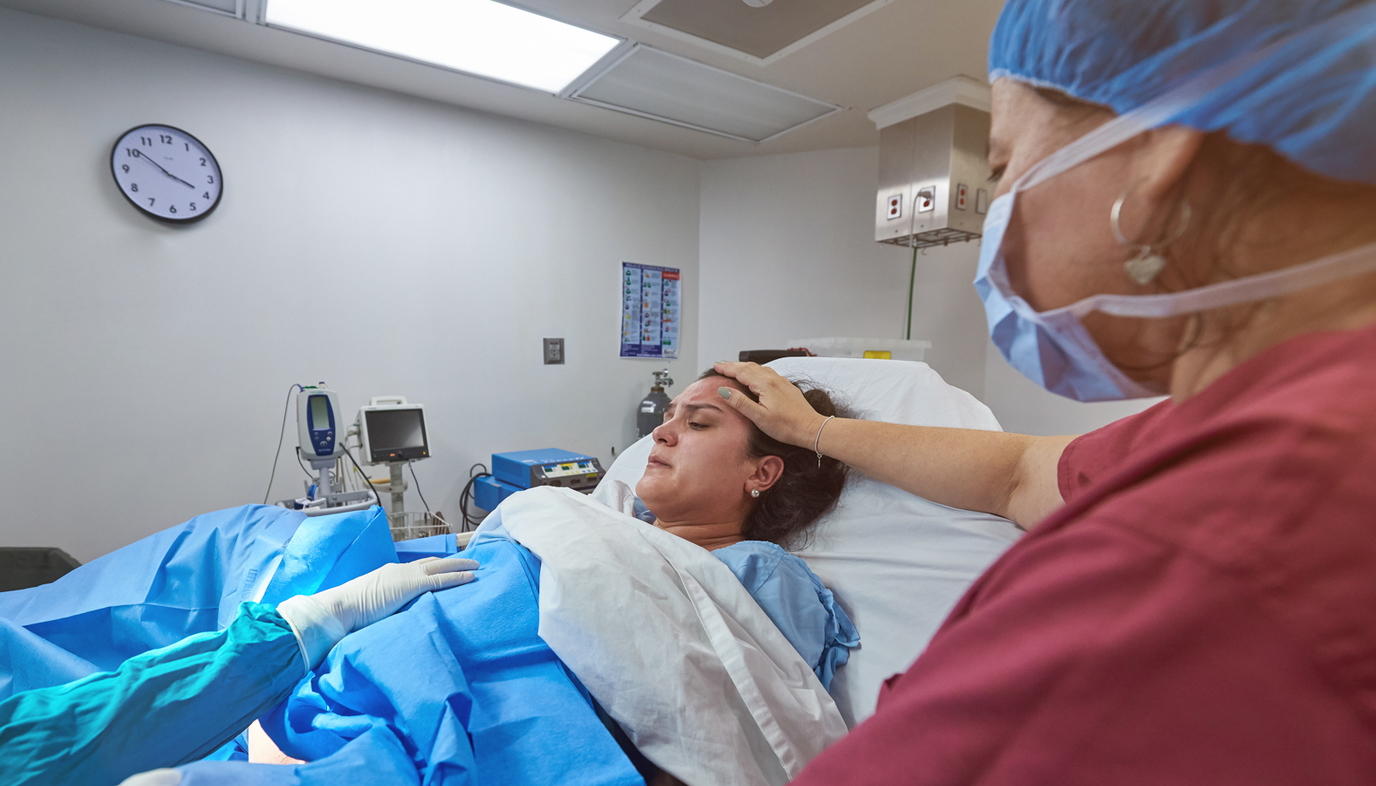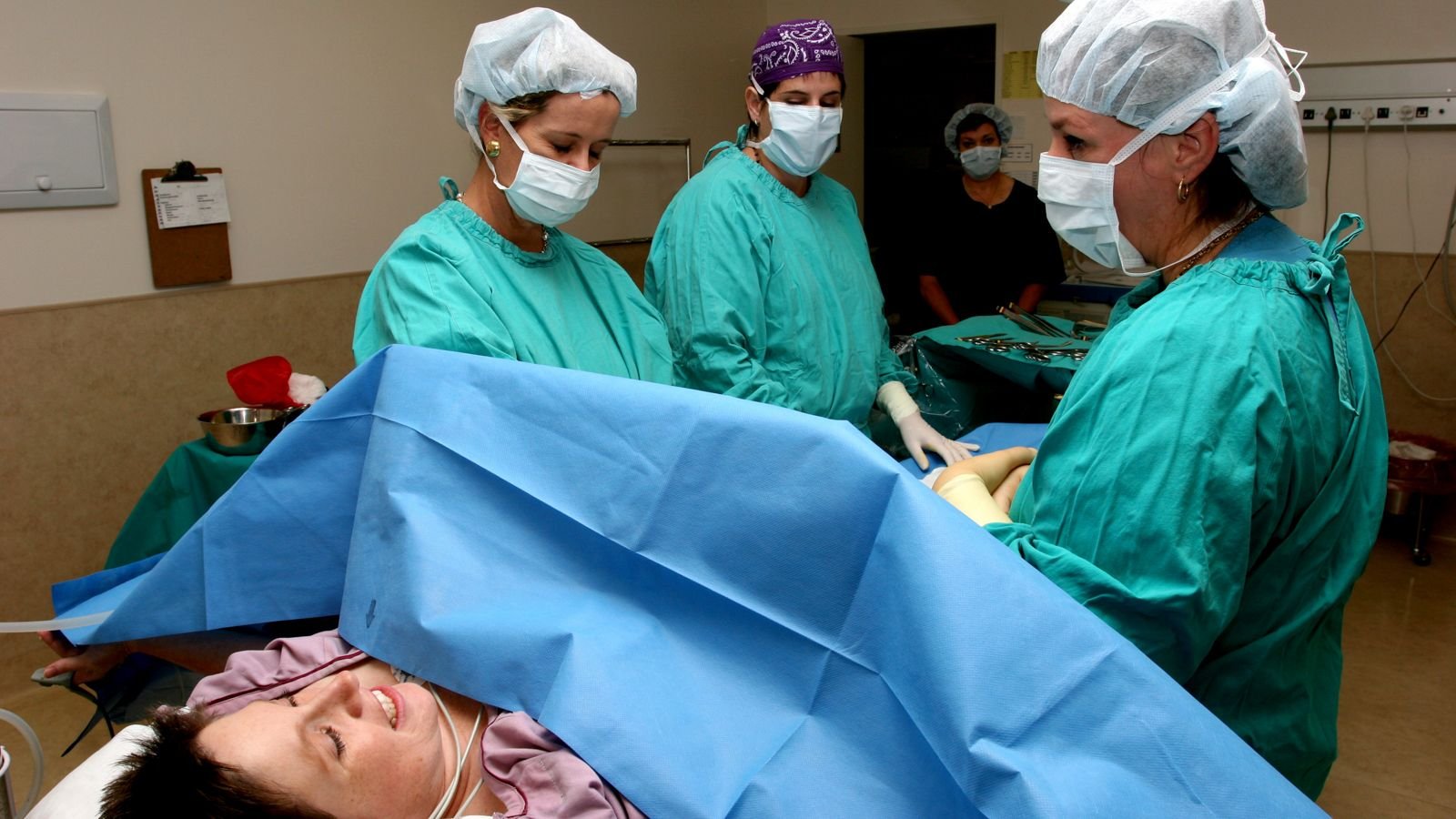
Do you find yourself mulling over the "what if" emergency situations that might happen during childbirth? Luckily, obstetrical emergencies occur in only a very small amount of births in the United States. Even less common is the complication called shoulder dystocia, an obstruction that happens when the infant's head comes out of the birth canal but its shoulders do not deliver quickly afterward. While the chance of this occurring is tiny, it's best to calm your fears by arming yourself with knowledge.
Causes of Shoulder Dystocia
This may result from any number of things, such as:
Abnormal position of the fetus
Cephalo-pelvic disproportion (This means the pelvis can't accommodate the movement of the fetus through the birth canal.)
Here are the most recognized risk factors for shoulder dystocia:
Maternal diabetes
Fetal macrosomia (fetus is large, above the 90th percentile for gestational age)
Maternal obesity
Indications for Shoulder Dystocia
Moms at risk for delivering a baby with shoulder dystocia are those who have vaginal births, with the baby's head (cephalic) presenting first, and who deliver full term or after 34 weeks of gestation.
The incidence of shoulder dystocia ranges from 0.6% to 1.4% of cephalic vaginal deliveries, according to the American Congress of Obstetricians and Gynecologists. Other medical sources give these ranges: 1% to 2% as reported in retrospective studies, and about 3.3% to 7% according to prospective studies.
Diagnostic Challenges
Why are there so many possible incidence ranges? An "objective diagnosis" does not exist. Some mild variations of shoulder dystocia are not easy to diagnose. Even though the definition may seem clear, a healthcare provider may not actually picture this obstruction from a clinical standpoint. Instead, the provider may find that it is going to take more than customary traction to deliver the baby. Plus, he or she will need to use special techniques (maneuvers) to do so.
When Shoulder Dystocia Happens
The good news is that the negative effects of shoulder dystocia can usually be prevented. By using maneuvering techniques, your health providers can help prevent injury. (About 25 percent of these cases result in damage to nerves in the baby's arm. So, find out if the medical team caring for you at delivery is trained in such emergencies and how to prevent such effects.)
Here are some of the accepted techniques your health providers can use to reposition the baby's shoulders during delivery:
Fetus | Mother |
Jacquernier maneuver (posterior arm delivery) | Suprapubic pressure |
Rubin maneuver | McRoberts maneuver |
Shute forceps maneuver | Symphysiotomy |
Zavanelli maneuver | Sims maneuver |
For details about these maneuvers, consult with your doctor or hospital. When these are used alone or in conjunction with others, it is possible to complete delivery.
Post-Delivery Treatment
Most babies who experience shoulder dystocia usually are okay. However, if there were difficulties during any of the maneuvers, then your baby may be required to stay in the hospital after delivery for monitoring.
In some cases, shoulder dystocia may damage nerves in your baby's shoulder and arm section (called the brachial plexus). The damage happens when the nerves are stretched too much during birth. For nine in 10 babies, brachial plexus gets better on its own, but some have long-term effects. If your child has lasting nerve damage, she will benefit from physiotherapy. As she grows, this type of rehabilitation will help her learn how to manage daily activities.
By knowing what can be done about shoulder dystocia, you're one step ahead in preventing negative effects. You can help dispel fears by discussing any remaining concerns with a health professional.


